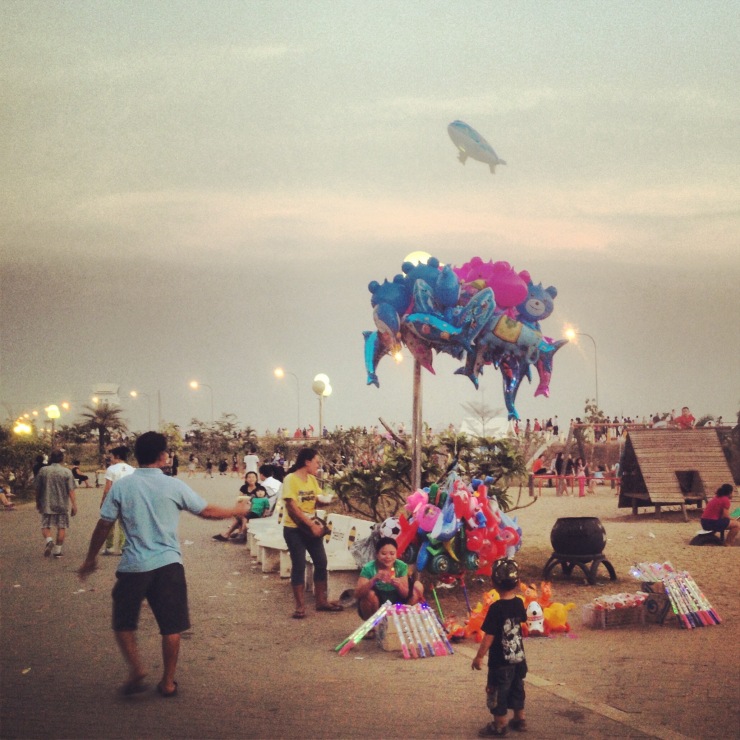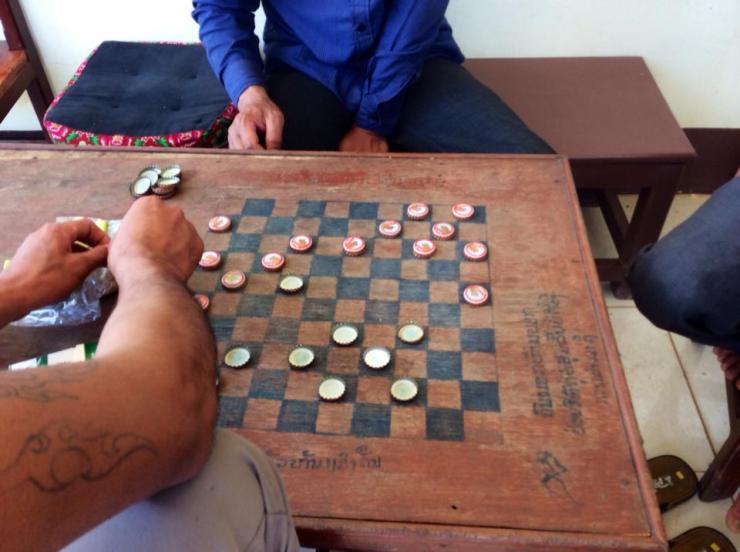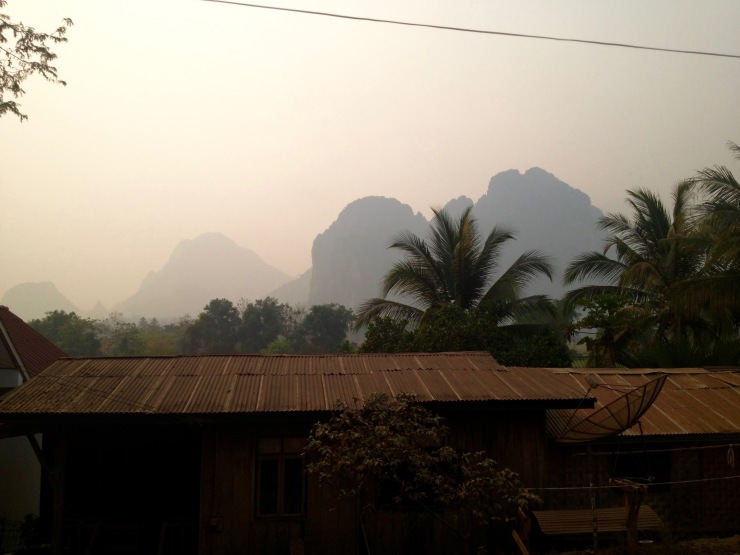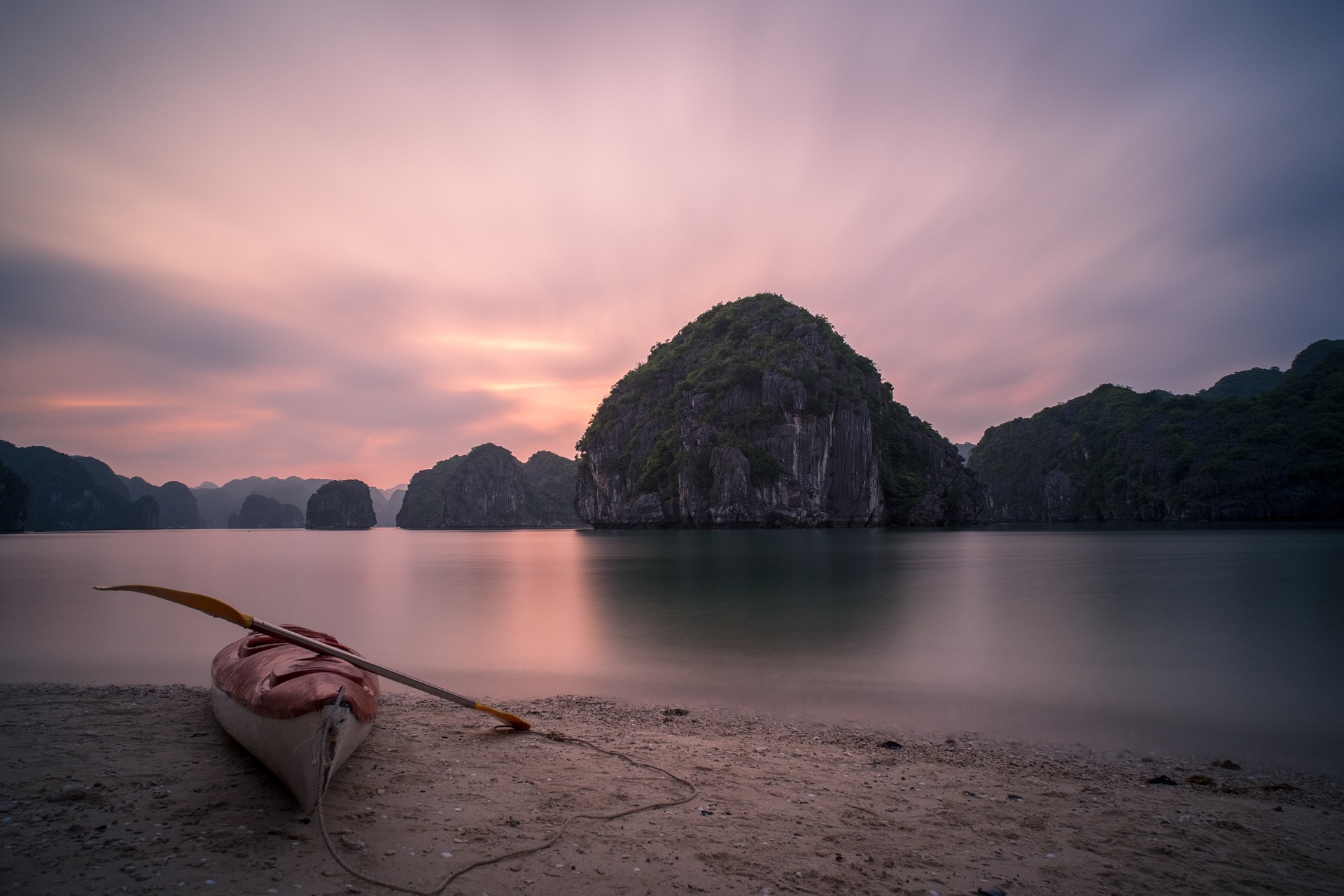I am not sure where to begin when it comes to writing about Laos, a place that was at one time my home of nearly two years, which chipped off a huge piece of my heart that still beats for that mellow Mekong lifestyle. Laos lacks Thailand’s seedy side, is more humble than Cambodia, friendlier and quieter than Vietnam, and is less well known than Myanmar. It is geographically and figuratively the heart of Southeast Asia, landlocked between bigger, more powerful and better-known neighbours, trapped in a time warp borne from 40 years of communist, single-party rule and a buddhist-animist penchant for the slow and considered life.
Laos epitomises the best features of its regional neighbours without the dross; retaining a stoic, almost stubborn, sense of integrity helped along by its ‘off the beaten track’ status that has staved off the nastier strains of tourism found in the likes of Thailand and Cambodia. In fact, Laos is by and large tourist-free, its most amazing sights paradoxically free of charge or dirt cheap, yet devoid of visitors.

It’s hard to put into words why Laos grabs so many people, sucking them into an alluring time warp where the hours slow down and, before you know it, what was meant to be a two-week stopover meanders on and on like the proverbially snaking Mekong. And there is plenty to snare would-be itinerants, holding them still for longer than might have been intended. There’s the French colonial influence that sees giant boulevards and curly wrought iron architecture interspersed amongst the chaotic laneways, buddhist temples and stark, lime green communist-style buildings, offering up the best croissant, bread, patisserie and coffee in all of Asia.

Kungs Cafe, Vientiane

There’s the infectious sense of dolce far niente (or, the Lao equivalent, sabai sabai), more often associated with so-laid-back-they’re-horizontal southern European cultures (it’s jokingly said that the ‘P.D.R’ in ‘Lao PDR’ stands for ‘please don’t rush’). There’s the unswervingly welcoming nature of the Lao people, who greet foreigners (endearingly referred to by locals as falang; literally “French” in Lao language) with open arms, without the over-trained, saccharine, faux hospitality of other southeast Asian countries.


Lao people’s genuine hospitality and warmth comes with a healthy dose of party mania; Beer Lao is one of the best in the region and is consumed in abundance on every possible occasion, alongside back-to-back Johnny Walker…particularly if it’s a Lao wedding where they might break out the blue label!

Laos also offers artisanal culture producing some of the most extravagant and stunning woven textiles on the planet. Women tend to own hundreds of traditional Lao sinh for all manner of occasions from the office to a wedding or formal function; the most expensive sinh on which I splurged was a few hundred dollars.

Then there’s Laos’ fascinating history and culture, equal parts fact and intrigue, which pervades every facet of modern life in one of the world’s most resilient forms of old school one-party state communism. Despite the political landscape, Lao culture manifests in brilliant colour through the cultural and religious life found in buddhist temples (wats) and religious ceremonies and blessings (bacis), blended with animist superstition and mysticism dictating which lotto numbers one should choose, and investing a lot of authority in the word of local fortune tellers.




And of course there’s the extravagant natural beauty – the real backdrop to Laos – which varies across the four corners of the country and produces some of the most stunning landscapes and most abundant (albeit, sadly, rapidly depleting) cornocopias of flora and fauna on earth.

Despite being relatively ‘off the beaten track’, Laos has no shortage of world class tourist attractions. There’s the mysterious plain of jars, which rival the likes of Stonehenge and Easter Island for its mystic monoliths. Nature lovers will fall for the waterfalls and coffee fields are dotted throughout Pakse and surrounds, where one can also explore Khmer temple Wat Phou, with the serenity that’s absent in the tourist-riddled complex of Angkor Wat.
There’s the world class historical site of the Vieng Xay caves, impossible to get to and nearly deserted, but worth the effort to see the network of caves where the Pathet Lao – the founding fathers of modern Laos – hid out and lived, trained and organised for 9 years during America’s secret war before coming to power in the Communist victory. There’s the drunken parties and tubing in Vang Vieng, which despite having mellowed since a spate of drug-related tourist deaths gives Thailand’s full moon parties a less vulgar run for their money. And of course one can’t go past world heritage site Luang Prabang, whose French colonial charm mixed with enchanting temples and nature render it deservedly the number one attraction in Laos, although sadly often the only stop on many-a-tourist’s itinerary.




The beautiful backdrop to Vang Vieng
But the real charm from Laos comes not from a check list of sights and spectacles; box-ticking tourists will only be disappointed if comparing little Laos to the grandeur of Cambodia’s Angkor Wat, the heaving popularity of Thailand’s beaches and parties, and the more well-known historical record of Vietnam’s war-riddled past. Laos’ real charm comes from the magic of the quotidian. It’s in the mighty Mekong, a backdrop for daily life in Laos that provides a setting for festivals, romantic walks, beer stops on rickety riverside shacks, boat races, evening runs, and 80s style aerobics-en-masse.
It is in the calendar of festivals throughout the year, from Dragon Boat racing, to the nationwide water fight at Pi Mai (Lao New Year), to the Rocket Festivals celebrating the coming of the rainy season, where rockets are fired into the sky and Lao people wear symbols of fertility for the harvest (including giant wooden phalluses!). It’s in the legendary parties, with the constant stream of beer Lao, strange beer snacks (chicken feet, anyone?), conversation and smiles. It’s, in the absence of malls, fast food or cinemas – albeit that these are gradually creeping in – forcing one to find fun in a game of cards or petanque (a Lao favourite), a DVD night with friends, or an all nighter of Lebowski-esque old school bowling. My only advice to tourists would be to ditch the itinerary and take their time to discover Laos. It really deserves to be explored in a meandering, curious and unplanned fashion, with open eyes and a Laotian-style laid back attitude, whether you have a week or a myear to do so.





Whatever your itinerary, I can guarantee that Laos will get under your skin and draw you back again, and again, and again. It’s a country that deserves to be known, to be on the map, and yet – paradoxically – derives its charm from the very sense of being unknown; from its mysticism and intrigue. The word is slowly but surely getting out, and Laos’ cities in particular are rapidly changing as they cave to the incessant push of modernity and investment; malls and cinemas are opening where previously there were corner shops and DVD peddlers, and year-on-year the landscape changes. But, despite the steady pace of change, Laos keeps on keeping on in its own humble, unassuming way, unphased by the falang that pass through on their way to somewhere else. ![]()

Jessica Sinclair is a freelance writer, travel nut, international affairs specialist, and enthusiast for all things global. Having grown up in New Zealand, England, Borneo and Australia, and with family scattered across the globe, Jessica developed from her youngest years an in-built sense of wanderlust and a desire to see more of the world.
During and on completion of her Master of International Studies in Geneva, Switzerland, Jessica has continued to wander the globe for inspiration and edification, in amongst working on project development for non-profit organisations in developing countries. Her stories and articles attempt to bring cultural understanding and unique ‘insider’ angles to the places she visits, and to broader musings for the seasoned voyager, burrowing to the core of what it really means to travel.









